
Looking at the data from Social Security, I wanted to see not only what the most popular names since 1880 were, but also how the popularity of the names changed over time. Figure 1 and 2 show the most popular male and female names in terms of the total number of Americans given a particular name. For males there were over 5 million Johns and James and for females there was a little over 4 million Marys.
Figure 1
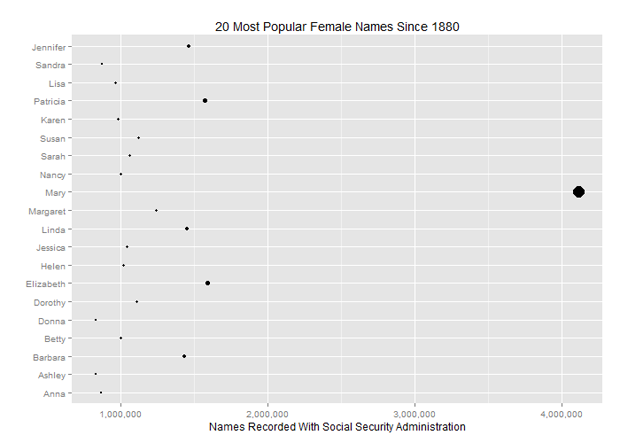
Figure 2
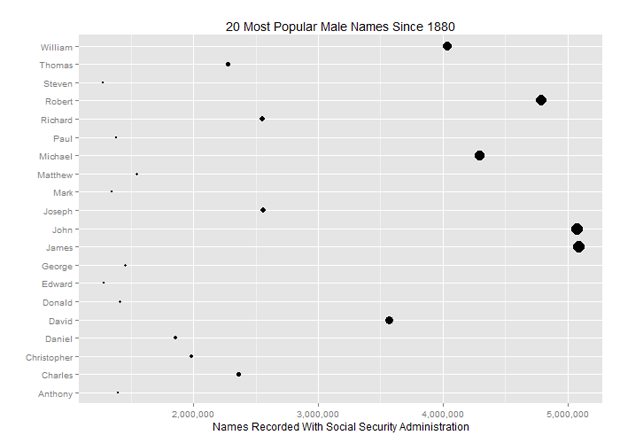
Figures 3 and 4 show how the top seven male and female names have risen and fallen in count values over time. It is interesting to note the distinctly different pattern among male names as oppsose to female names. Male name popularity among the top seven seems generally unimodal while female names have distinctly different peaks at different places.
Figure 3
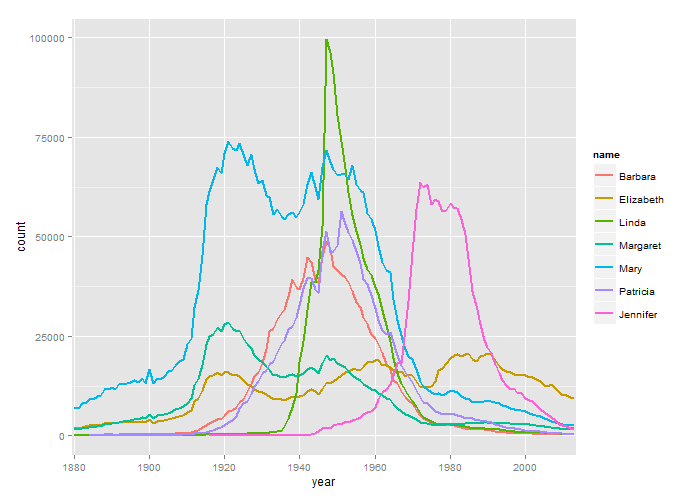
Figure 4
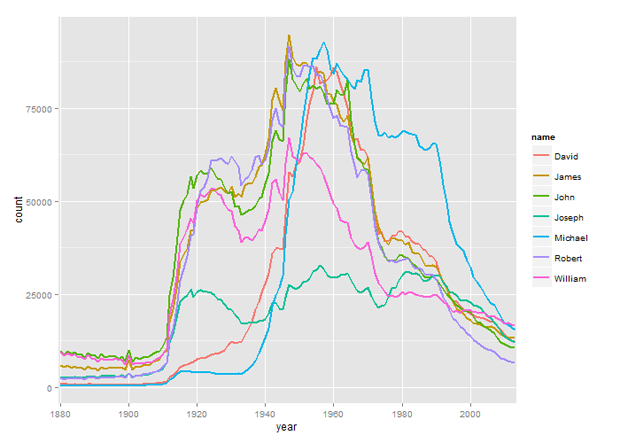
In order to cut down on extraneous noise caused from rises and falls of birth rates I also included measurements of what proportion of the total names listed (in the entire Social Security list) each of the top seven names represented (Figure 5 and 6). I find these figures much more interesting as they show how names such as John and William which were extremely popular in the 1880s have since fallen dramatically in popularity.
Likewise among women the name Mary has fallen almost constantly from a unique peak to a diminutive level among female names. It is interesting that among women, female names seem to peak with high popularity from very low levels of usage such as the names Jennifer, Margarette, Linda, and Barbara then once again fall in popularity.
Figure 5
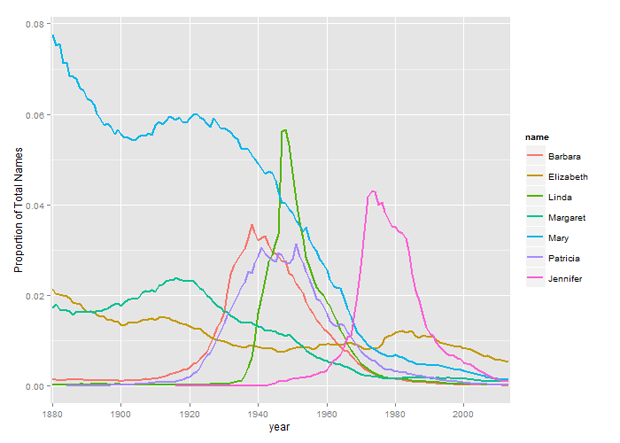
Figure 6
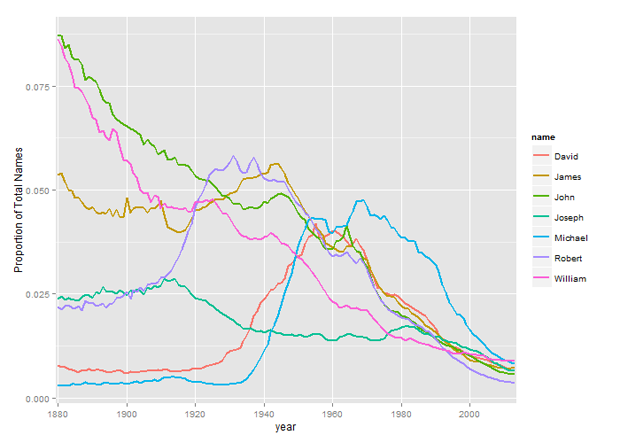
Finally in an attempt to analyse the tail end of these trends which uniformly seem to be trending down, I ranked the names among the total number of instances per year for each name. Figure 7 and 8 show the results. In both figures the y axis is scaled by log 10. For men the name Micheal is particularly interesting with very low ranking on usage in the early 20th century and emerging as the most popular name in the decades between 1960 and 2000. Even more interesting, among the female names, the name Jennifer first appeared around 1918 with a usage ranking around 5,000 only to steadily gain popularity until being the most popular name is use from the 1970s to early the 1980s. Other popular names such as Patricia, Margette, and Barbara followed similar patterns though not as stark.
Figure 7
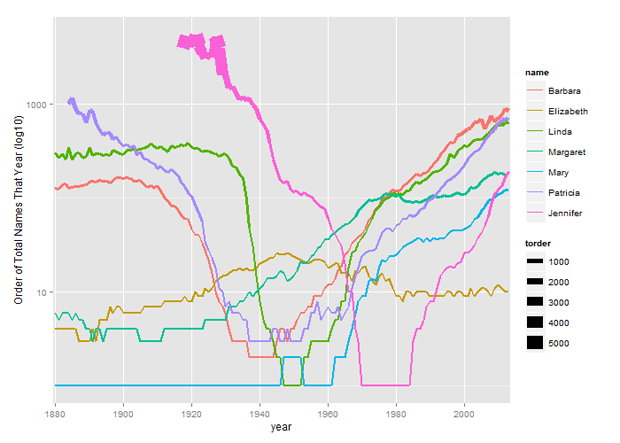
Figure 8
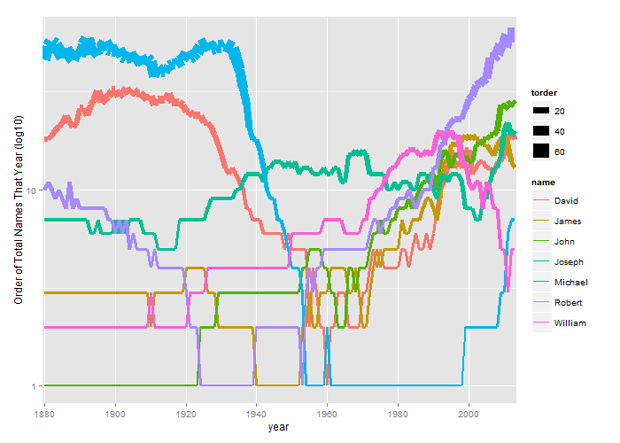
The total rankings of female names confirms a downward trend in popularity of traditionally popular names with perhaps the slight exception of Elizabeth, which while never extremely popular has managed to stay around the top 10 most popular names in recent decades. Among the male names there does not seem to be as much faddish behavior with all of the seven names observed remaining within the top 60 names of those chosen.
To see how these tables are produced you may find my R code below the figures or on github.
This article first appeared on Francis Smart’s personal blog.




